Research and development of large-scale high-density multi-hop international standard wireless communication system for the realization of Society 5.0
Research institution:Nissin Systems, Kyoto Univesity
Research representative:Yoshio Kashiwagi
Overview of research and development
・ Research and develop the multi-hop wireless IoT standard and perform international standardization so that stable operation can be performed even in environments where the surrounding environment changes after deployment of IoT devices in urban areas, etc., even in large-capacity and high-density environments, and stable communication is possible ..
・ After research and development, develop an IoT gateway device equipped with an internationally standardized large-scale high-density multi-hop wireless IoT system and a sensing data acquisition platform for social implementation, deploy it in a service assumed by Society 5.0, and perform social implementation.
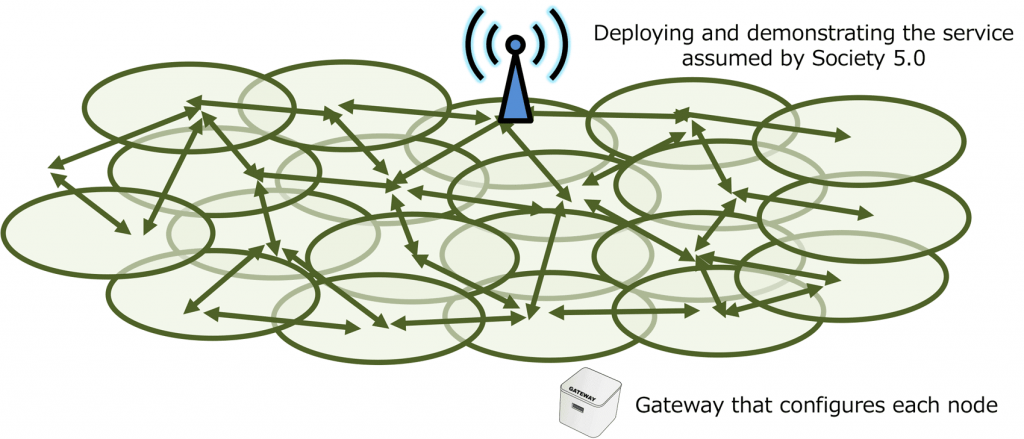
Point of research and development
Technical issue 1
①Research on large-scale high-density multi-hop network by Wi-SUN FAN (Field Area Network),
②Research on large-scale high-density multi-hop networks by Wi-SUN RLMM (Resource Limited Monitoring and Management),
③Proposal, design, implementation, verification, evaluation, etc. of the basic functions such as connection stability, low power consumption, and improvement of communication speed for the three items of research on the sensing data acquisition platform for social implementation by Wi-SUN FAN. Develop specifications and aim for international standardization and build a foundation that can be implemented in society. Regarding Wi-SUN FAN, we will further improve stability and speed up communication with the requirement of the connection rate of 99.7% achieved by the existing 29 million smart meters for the next 10 years. In addition, Wi-SUN RLMM, like Wi-SUN FAN, not only has stability of connection and performance improvement, but since the profile itself has not been internationally standardized, we will proceed with the international standardization of Wi-SUN RLMM.
① Research on large-scale high-density multi-hop network by Wi-SUN FAN (Field Area Network)
Wi-SUN FAN 1.0 has already been completed as the first edition of international standardization. In this research and development, we propose a revision to Wi-SUN FAN 1.1 so that it can be applied to next-generation smart meters such as electricity and gas for domestic use, and it is the research and development that implements international standardization and implementation to wireless devices.
・ IETF RPL network layer high connection rate routing method
・ Advanced MAC layer (CSMA) and low power consumption
・ Strong environment resistant tree structure in high-density environment, IPv6-based
・ ~600Kbps FSK high speed communication
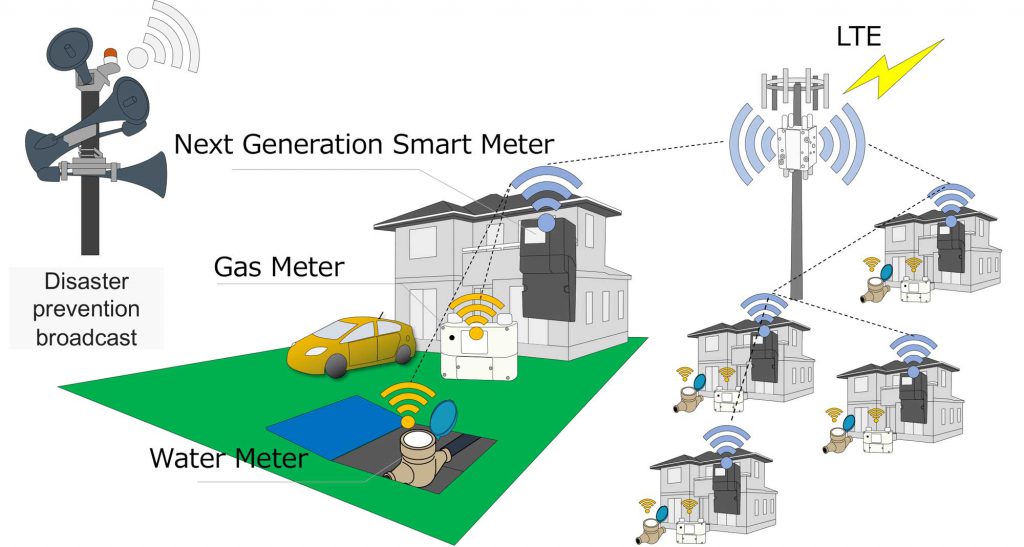
Electricity, gas, water utility meter, energy management, smart city, disaster prevention, transportation, elderly watch service, bi-directional real-time communication
② Research and development on large-scale high-density multi-hop network by Wi-SUN RLMM (Resource Limited Monitoring and Management)
Research and develop Wi-SUN RLMM, which is one of the Wi-SUN profiles that can be driven with resource saving such as CPU capacity, memory, power consumption, etc. Wi-SUN RLMM has not been internationally standardized yet, and specifications will be re-proposed by the final year, and some parts will be redesigned for international standardization.
・ Data link layer routing method based on IEEE 802.15.10
・ Low power consumption MAC layer
・ Strong environment resistant mesh structure in high density environment, Non IP base
・ Improved connection stability and international standardization

Low-cycle data for structures such as bridges, buildings, and tunnels such as cities and transportation, agriculture, fisheries, and food industries
③ Research and development of sensing data infrastructure for social implementation by Wi-SUN FAN
The Wi-SUN FAN system that operates in a large-scale, high-density environment will be introduced as a multi-hop wireless system for next-generation power and gas metering or smart cities (meters installed after 2022 and after 2012 will be replaced at any time) Be). Regarding stable connectivity, we will conduct “① Research on large-scale high-density multi-hop network by Wi-SUN FAN”. In this research and development, various sensor data are collected by devices connected by Wi-SUN FAN. Develop a cloud platform for aggregation and actually perform and evaluate with 1,000 devices.
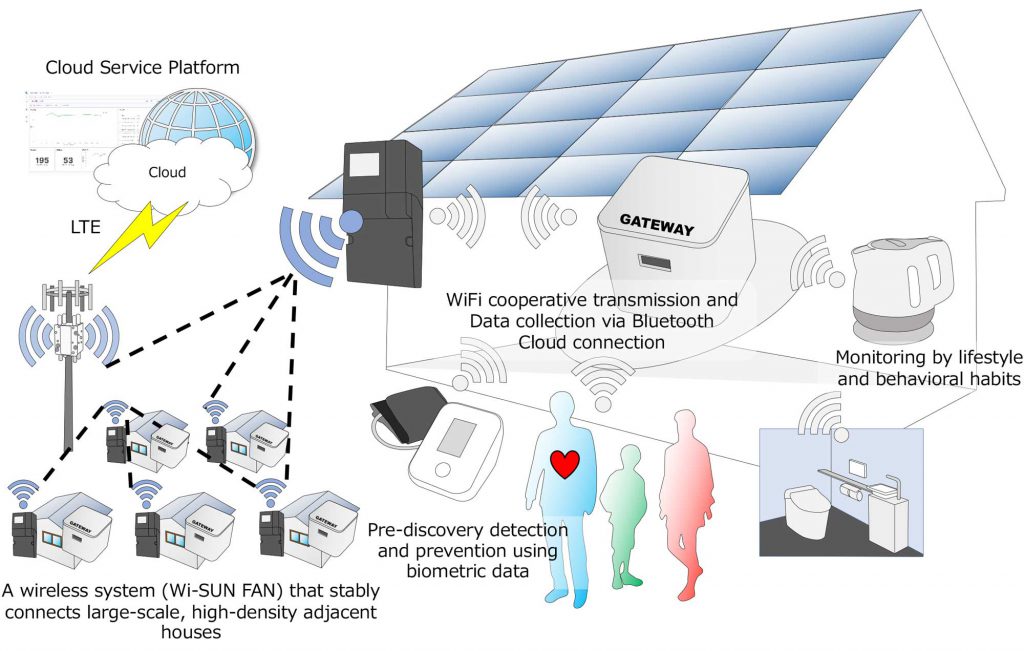
Medical / nursing care, health promotion and life support, factory, logistics, food, disaster prevention / mitigation
Members

Yoshio Kashiwagi
Nissin Systems
Research representative
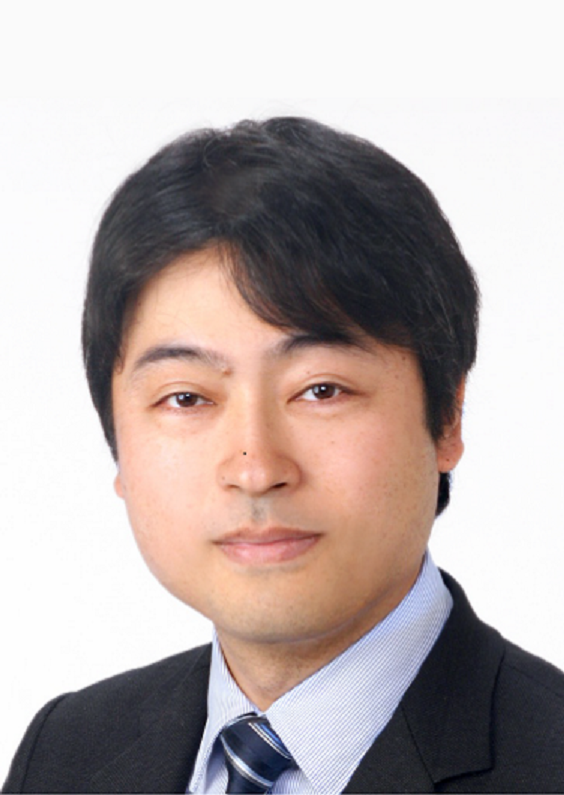
Hiroshi Harada
Kyoto University
Chief of research
Hiroko Masaki Kyoto University
Hidetoshi Itaya Nissin Systems
Takashi Yamashita Nissin Systems
Achievements
・ Promote basic design and specification of this year’s plan, including international standard proposals, oral presentations, and peer-reviewed oral papers
-Completion of basic design of each component, implementation of some prototypes and evaluation in preparation for the large-scale demonstration planned for the final year
・ At the beginning of the period, the basic design of the plan will be further advanced by the end of the fiscal year, leading to trial production, evaluation, and redesign in the next fiscal year.
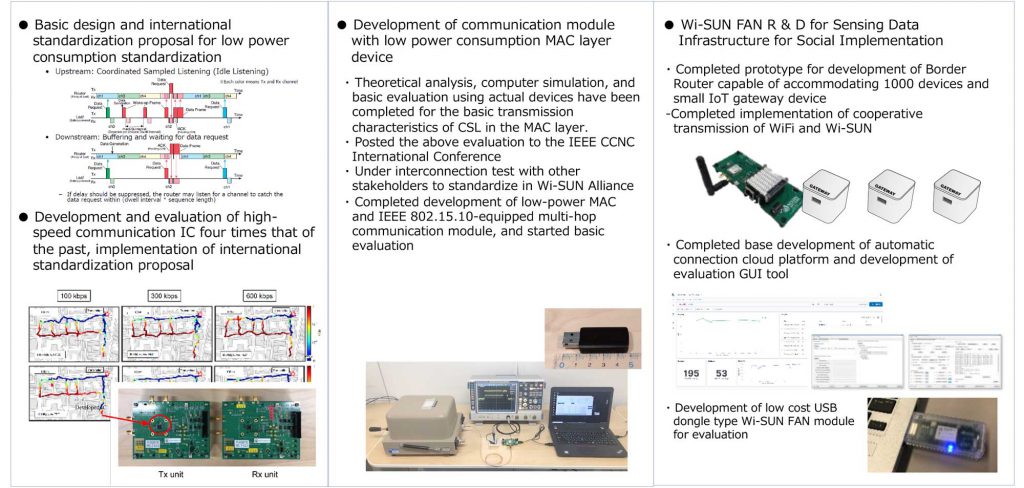
[Peer-reviewed paper]
- R. Okumura, K. Mizutani, and H. Harada,“Dependable Source Routing Scheme for Multi-Hop Networks Based on Receiver-Initiated MAC Protocol”,IEEE Consumer Communications and Networking Conference (CCNC) 2020 pp. 1-4, January 2020.
- K. Mizutani, R. Okumura, K. Mizutani, and H. Harada,“A Home Area Heterogeneous Wireless Management Scheme by Wi-SUN FAN and Wi-Fi Systems”,IEEE Consumer Communications and Networking Conference (CCNC) 2020 pp. 1-4, January 2020.
- D. Hotta, R. Okumura, K. Mizutani, and H. Harada,“Stabilization of Multi-Hop Routing Construction in Wi-SUN FAN Systems”,IEEE Consumer Communications and Networking Conference (CCNC) 2020 pp. 1-, January 2020.
- K. Samejima, R. Okumura, K. Mizutani, and H. Harada,“Wireless Smart Ubiquitous Network by CSL-based Low Power MAC Protocol”,IEEE Consumer Communications and Networking Conference (CCNC) 2020 pp. 1-2, January 2020.
- K. Samejima, R. Okumura, K. Mizutani, and H. Harada,“Evaluation of CSL-based Low Power MAC Protocol for Wireless Smart Metering Networks”,IEEE Consumer Communications and Networking Conference (CCNC) 2020 pp. 1-6, January 2020.
- R. Wayong, R. Okumura, K. Mizutani, and H. Harada,“A Scheduling Scheme for Channel Hopping in Wi-SUN FAN Systems toward Data Throughput Enhancement”,The 2020 IEEE 91st Vehicular Technology Conference: VTC2020-Spring
- K. Mizutani, R. Okumura, K. Mizutani, and H. Harada,“Coexistence of Synchronous and Asynchronous MAC Protocols for Wireless IoT Systems in Sub-Gigaherz Band”,IEEE 6th World Forum on Internet of Things (WF-IoT)
- Y. Xiang, R. Okumura, K. Mizutani, and H. Harada,“Data Rate Enhancement for IEEE 802.15.4 Based FSK Transmission Scheme”,IEEE 6th World Forum on Internet of Things (WF-IoT)
[Verbal presentation]
- Y. Xiang, R. Okumura, K. Mizutani, and H. Harada,“Field Experiment of IEEE 802.15.4 Based High-Speed FSK Transmission Scheme”, IEIC SRW Group (Kawasaki Kanagawa), January 2020.
- Hidetomo Ochiai, Kiyoshi Mizutani, Ryota Okumura, Keiichi Mizutani, Hiroshi Harada, “High-density frequency hopping in high-speed Wi-SUN FAN networks”, IEIC SRW Group (Kawasaki Kanagawa), January 2020.
- Ryota Okumura, Keiichi Mizutani, Hiroshi Harada, “A Study on MAC Protocol for Battery Powered Devices in Wireless Field Area Networks”, IEE-CMN (Ishigaki, Okinawa), January 2020
- Y. Xiang, R. Okumura, K. Mizutani, and H. Harada,“Feasibility Study of IEEE 802.15.4 Based High-Speed FSK Transmission Scheme for Broadband Wireless Field Area Network”, IEE-CMN (Ishigaki, Okinawa), January 2020.
- Hiroko Masaski, Ryota Okumura, Keiichi Mizutani, Hiroshi Harada, “Indoor transmission experiment of IEEE 802.15.4g system for medical and nursing use”, IEIC SRW Group (Megro, Tokyo), March 2020.
- Rei Hirakawa, Ryota Okumura, Keiichi Mizutani, Hiroshi Harada, “Route construction method for improving transmission characteristics in Wi-SUN FAN networks”, IEIC SRW Group (Megro, Tokyo), March 2020., March 2020.
- Yoshio Kashiwagi “Research and development of large-scale high-density multi-hop international standard wireless communication system for the realization of Society 5.0”, IEIC SRW Group (Megro, Tokyo), March 2020.
- Yoshio Kashiwagi, “The trend of International Radio Communication Standard Wi-SUN FAN”, IEICE Society Conference 2020 (Hiroshima University East Hiroshima Campus), March 2020.
「International standard proposal」
- Wi-SUN Alliance FAN Working Group Japan Meeting,20191113-preparatory-materials-for-development-of-Wi-SUN-FAN1.1-en-0v00, Preparatory materials for development of Wi-SUN FAN 1.1 Japanese specification, November 2019.
- Wi-SUN Alliance FAN Working Group Japan Meeting,20191205-Wi-SUN-FAN1.1-discussion-items-KyotoUniv-0v00, PHY Layer and Low Power MAC Layer for FAN 1.1, December 2019.
- Wi-SUN Alliance FAN Working Group Japan Meeting,20191127-preparatory-materials-for-development-of-Wi-SUN-FAN1.1-0v00, November 2019.
- Wi-SUN Alliance FAN Working Group Japan Meeting,20191212-Wi-SUN-FAN1.1-discussion-items-KyotoUniv-0v00, Supporting for PHY Layer for FAN 1.1, December 2019.
- Wi-SUN Alliance FAN Working Group,20191220-Wi-SUN-FAN1.1-proposal-KyotoUniv-0v00, PHY Layer and Low Power MAC Layer for FAN 1.1, December 2019.
- Wi-SUN Alliance PHY Working Group,20200107-Wi-SUN-PHY-proposal-KyotoUniv-0v00, PHY Layer for FAN 1.1, January 2020.
- Wi-SUN Alliance FAN Working Group,20200107-Wi-SUN-FAN1.1-proposal-KyotoUniv-0v01, Low Power MAC Layer for FAN 1.1, January 2020.
- IEEE P802.15 Working Group for Wireless Personal Area Networks, IEEE 802.15-20-0009-02-wng0, Extension of the SUN FSK in 802.15.4 PHY for JAPAN utility applications, January 2020.
- Wi-SUN Alliance FAN Working Group,20200124-Wi-SUN-FAN1.1-proposal-KyotoUniv-0v02, Low Power MAC Layer for FAN 1.1, January 2020.
- Wi-SUN Alliance FAN Working Group,20200211-Wi-SUN-FAN1.1-discussionitem-KyotoUniv-0v00, Low Power MAC Layer for FAN 1.1, February 2020.
- Wi-SUN Alliance FAN Working Group,20200224-Wi-SUN-FAN1.1-discussionitem-KyotoUniv-0v00, Low Power MAC Layer for FAN 1.1, February 2020.
- Wi-SUN Alliance FAN Working Group,20200310-Wi-SUN-FAN1.1-discussionitem-KyotoUniv-0v02, Low Power MAC Layer for FAN 1.1, February 2020.
- Wi-SUN Alliance PHY Working Group,20200205-Nissin Systems Wi-SUN-FAN1.1 technical proposal 0v02, February 2020.

